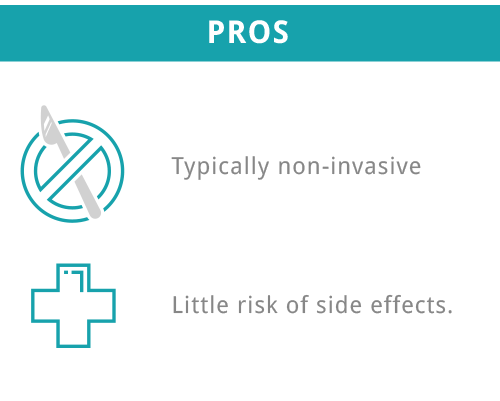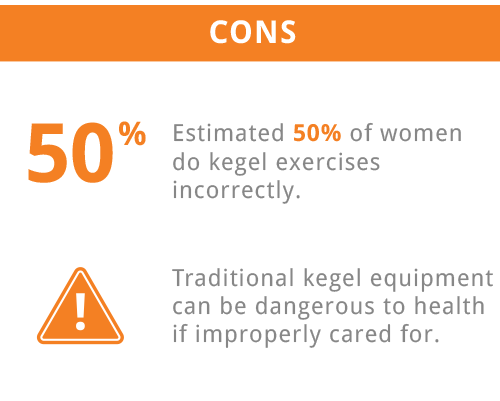Strengthening of the pelvic floor
PHYSICAL THERAPY
Treatment of the pelvic floor is a specialized aspect of physical and occupational therapy. There are a wide range of issues that can arise from weakness in the muscles of the pelvic floor or around the organs inside the pelvis such as urinary frequency, urgency or problems with incontinence and interstitial cystitis.
Patients typically attend in-office appointments 2-3 times per week for a duration of 12 weeks. Treatment requires manual digital manipulation of the external and internal tissues of the pelvis, vagina and/or rectum. This type of therapy is fairly intimate and can be uncomfortable for some patients.
Therapists will often utilize bladder training, biofeedback, pelvic floor muscle exercises and electrical muscle stimulation.
Pelvic Floor Muscle Exercises (Kegel Exercises)
Many physicians recommend Pelvic Floor Exercises as a first line treatment for Stress and Urge bladder leakage. The goal of pelvic floor muscle training is to strengthen weak urinary sphincter and pelvic floor muscles – the muscles that control urination and defecation.
Pelvic floor muscle exercises are often referred to as “Kegel” exercises; named after the physician, Dr. Arnold Kegel, who popularized this technique.

How to Perform Kegel Exercises
Imagine attempting to stop the flow of urine or passing gas. When you perform this action you are contracting the muscles of the pelvic floor. It is extremely important that you are contracting these muscles in isolation and NOT using your abdominal, buttock or leg muscles.

The Problem with Kegel Exercises
Research has shown that over half of women who attempt Kegel exercises do them incorrectly by overusing their abdominal, buttock or leg muscles resulting in no improvement in pelvic floor muscle strength—remember, you have to contract these muscles in isolation in order to be effective! In addition, if you already have very weak pelvic floor muscles, you may not be able to contract them effectively.
Finally, according to Dr. Arnold Kegel, “Muscles that have lost tone, texture and function can be restored to use by active exercise against progressive resistance since muscles increase in strength in direct proportion to the demands placed upon them.” Simply put, you need to perform your exercises with active resistance—something to squeeze against.
There are devices available, including FDA cleared, over-the-counter devices (no prescription required) to assist you in identifying the correct muscles and providing active resistance.
Biofeedback
Biofeedback is a technique that provides you with real-time information about activity in the bladder and pelvic muscles to help you learn to contract these muscles properly. Sensors are placed internally and/or externally within or around the vagina or rectum. Many trained specialists, such as physical therapists, occupational therapists, and nurses provide these services. Patients typically require 2-3 in-office visits per week to learn how to isolate and contract the pelvic floor muscles while using biofeedback to guide performance. In addition, there are biofeedback products available for home use.

